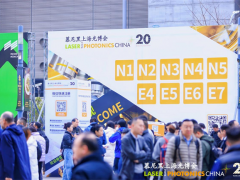圭亞那-蘇里南石油盆地可能擁有比預期大得多的儲量
蘇里南尋求在2030年前復制圭亞那的石油繁榮
盈虧平衡低估價以及輕質至中質含硫原油的發現使蘇里南成為對石油巨頭們有吸引力的地區
據美國油價網6月6日報道,圭亞那-蘇里南盆地已經成為世界上最熱門的海上石油遠景區,全球能源結構在爆發軍事沖突以后發生巨大變化,加勒比地區正在成為世界石油市場的重要參與者。在埃克森美孚公司在圭亞那海上斯塔布魯克區塊獲得32個發現以后,這個極度貧困的小國在短短7年時間里已經成為全球領先的鉆井目的地。美國地質調查局曾在2001年5月的一份簡報中預測,圭亞那-蘇里南盆地的未發現石油資源在28億至326億桶之間,但有跡象表明,這個數字要大得多。
據估計,僅在斯塔布魯克區塊,埃克森美孚公司就發現了近110億桶可采石油資源。此外,法國道達爾能源公司和美國阿帕奇公司在位于蘇里南海上的第58號區塊內獲得了5個重要油氣發現,估計可采石油資源量達到65億桶。在蘇里南海上還獲得了更多的石油發現。2020年12月,馬來西亞國家石油公司與合作伙伴埃克森美孚公司在蘇里南海上第52號區塊中首次獲得了有前景的石油發現。蘇里南正試圖復制鄰國圭亞那的石油繁榮,圭亞那的石油繁榮極大地促進了這個極度貧困的前英國殖民地國家的經濟。2020年,盡管發生疫情,圭亞那的國內生產總值增長了43.5%,2021年又增長了20%,令人印象深刻。
為了獲得更多的國際投資并促進蘇里南海上的油氣勘探活動,蘇里南政府通過蘇里南國家石油公司和行業監管機構Staatsolie在去年完成了淺水區塊的拍賣。蘇里南石油行業監管機構在年底前授出了3個區塊。作為運營商的道達爾能源公司與合作伙伴卡塔爾石油公司簽署了第6和第8號淺水區塊的油氣勘探合同,分別擁有49%和20%的權益,剩余權益由Staatsolie持有。美國能源巨頭雪佛龍公司也參與了此次拍賣,獲得了第5號淺水區塊的60%權益,Staatsolie持有40%的權益。去年12月,雪佛龍公司向荷蘭皇家殼牌公司出售了第5號區塊的20%權益。隨后在今年4月,Staatsolie與雪佛龍公司簽署了一份第7號淺水區塊的產量分成協議,80%的權益給了美國能源巨頭,同時保留了20%的權益。雪佛龍公司還持有第42號深水區塊33.3%的權益,該區塊與第58號區塊和圭亞那附近的坎赫區塊相鄰。這些淺水區塊尚未勘探過,被認為具有相當大的石油潛力,分析師們推測這些淺水區塊位于貫穿第58號區塊的同一條油道上。
為了吸引更多的投資,并促進蘇里南海上的油氣勘探活動,Staatsolie在今年5月宣布,該公司打算在今年年底拍賣更多的深水區塊,然后在2023年進行另一輪淺水區塊拍賣招標。雖然蘇里南的石油區塊拍賣在過去沒有獲得石油巨頭的足夠興趣,但由于道達爾能源公司和擁有50%權益的合作伙伴阿帕奇公司在第58號海上區塊中的成功,這種情況可能會改變。今年早些時候,運營商道達爾能源公司宣布在Krabdagu-1井中獲得了該區塊的第5個重大石油發現。雖然尚未做出最終投資決定,但道達爾能源公司認為,第58號區塊有足夠的可采油氣資源,可以進一步開發和提高生產價值。道達爾能源公司和阿帕奇公司預計將在今年年底前就第58號區塊做出最終投資決定,預計在2025年底前生產出第一桶原油。
盈虧平衡低估價,以及在蘇里南發現的輕質至中質含硫原油,讓這個國家成為外國能源公司的一個引人注目的勘探熱點,就像鄰國圭亞那一樣。多個行業分析師估計,蘇里南海上平均保本價格將在每桶40美元,只比圭亞那的平均保本價格每桶35美元略高。重要的是,迄今為止發現的原油的API度在34-43之間,而且含硫量很低。埃克森美孚公司從位于圭亞那海上斯塔布魯克區塊麗莎大油田生產的原油的API度為32,總硫量為0.58%,釩含量為23.5ppm。據預測,蘇里南沿海地區的原油具有類似的特征,因此輕質、低硫,這意味著它比附近的南美國家生產的原油更便宜、更容易提煉。
全球石油儲量第一的國家、哥倫比亞和厄瓜多爾通常開采出的原油是含硫量高、金屬和其他污染物含量高的重質原油品種。全球石油儲量第一國家的主打產品馬瑞混合原油的API度為16,含硫2.45%,釩含量為262ppm,這表明這種原油比重大,而且含硫量高。哥倫比亞主要原油Castilla原油的API度為18.8,含硫1.97%,含釩319.95ppm,這也表明這種原油比重大,而且含硫量高。厄瓜多爾主要的石油等級為東方原油,約占該國石油出口的三分之二,API度為23,硫含量為1.4%,釩含量為65ppm。這些特性使得這些原油等級提煉成低含硫量的高級燃料更加困難和昂貴。這也意味著,與圭亞那-蘇里南盆地的輕質低硫原油相比,它們在生產和提煉過程中會產生更多的碳排放。
這些特點使得這些石油品種在全球經濟中不那么受歡迎,因為全球經濟正在脫碳,石油公司面臨著越來越大的減少碳足跡的壓力。正是出于這些原因,石油巨頭道達爾能源公司和挪威能源巨頭Equinor分別選擇退出其在全球石油儲量第一的國家在奧里諾科河帶重油項目中30%和10%的非運營少數股權。該國國家石油公司成為這個資產的唯一所有者,該資產是一個高碳密集作業,生產的瀝青像超重原油一樣必須在出口前進行升級。這些因素也影響了對哥倫比亞和厄瓜多爾在經濟上至關重要的石油行業的投資,這兩個國家時下正在努力恢復到疫情前的運作狀態。
因此,圭亞那和蘇里南這兩個南美小國正在掀起新一波大規模的海上石油熱潮,引起了全球能源巨頭的極大關注。這兩個國家都證明自己是政治相對穩定的地區,尤其是與全球石油儲量第一的國家等許多歐佩克成員國相比,這一點得到了加強。這些發展引發了南美洲的地緣政治轉型,圭亞那和蘇里南成為全球能源公司和尋求高質量低碳強度原油進口的國家越來越重要的地區。蘇里南新興地區的外國投資正在穩步增長。這個國家的Tambaredjo油田目前的原油日產量約為1.65萬桶,預計到2030年前,蘇里南第58號和第52號區塊的原油日產量將達到65萬桶。這將給蘇里南陷入困境的經濟帶來健康的提振,蘇里南屆時有望成為南美洲第4大產油國。
李峻 編譯自 美國油價網
原文如下: the world's largest oil reserves country
Oil Majors Are Lining Up For The Next Great South American Oil Boom
The Guyana-Suriname oil basin may hold much larger reserves than anticipated.
Suriname is looking to replicate Guyana’s oil boom through 2030.
Low projected breakeven prices and discoveries of light to medium sulfur crude makes Suriname an attractive location for oil majors.
The Guyana-Suriname Basin has emerged as the world’s hottest offshore oil play and with the changes occurring to the global energy mix after the war, the Caribbean is becoming an important player in world oil markets. In the space of a mere 7 years, the micro-state of Guyana has emerged as a leading global drilling destination after ExxonMobil made 32 discoveries in the offshore Stabroek Block. While the U.S. Geological Survey predicted in a May 2001 fact sheet that the Guyana-Suriname Basin held somewhere between 2.8 billion and 32.6 billion barrels of undiscovered oil resources, there are signs the volume is far greater.
Exxon’s discoveries in the Stabroek Block alone are estimated to be nearly 11 billion barrels of recoverable oil resources. Then there are TotalEnergies and Apache’s five major hydrocarbon discoveries in offshore Surname Block 58 which is estimated to hold up to 6.5 billion barrels of recoverable oil resources. Additional petroleum discoveries have been made in offshore Suriname. In December 2020 Malaysia’s national oil company Petronas, with partner Exxon, made their first promising oil discovery in offshore Suriname Block 52. Suriname is seeking to replicate the epic oil boom being enjoyed by neighboring Guyana which has significantly boosted the economy. In 2020 Guyana’s gross domestic product expanded by a whopping 43.5%, despite the pandemic, and by another impressive 20% in 2021.
To garner further international investment and promote exploration in offshore Suriname the national government in Paramaribo through the national oil company and industry regulator Staatsolie completed a shallow water auction in 2021. That saw Suriname’s petroleum industry regulator award three blocks toward the end of that year. TotalEnergies, which will be the operator, and partner Qatar Petroleum are inking contracts for shallow water Blocks 6 and 8 with a 49% and 20% interest respectively, while the remaining 40% is held by Staatsolie. U.S. energy supermajor Chevron, which also participated in the auction, was awarded a 60% holding in shallow water Block 5 with 40% remaining in the hands of Suriname’s national oil company. In December 2021 Chevron sold a 20% interest in Block 5 to Royal Dutch Shell. Then in April 2022, Staatsolie signed a production sharing agreement with Chevron for shallow water Block 7 awarding 80% to the U.S. energy supermajor while retaining a 20% interest. Chevron also holds a 33.3% interest in deep water Block 42 which is adjacent to Block 58 and the Canje Block in neighboring offshore Guyana. Those shallow water blocks have not been explored and are thought to possess considerable oil potential with analysts speculating that they sit on the same oil fairway that runs through Block 58.
To attract further investment and bolster exploration in offshore Suriname Staatsolie announced in May 2022 that it intends to auction further deep-water blocks at the end of the year and then conduct another shallow water bid round in 2023. While Suriname’s oil auctions have failed to garner considerable interest in the past that is likely to change because of the success enjoyed by TotalEnergies and 50% partner Apache in offshore Block 58. Earlier this year TotalEnergies, which is the operator, announced a fifth significant oil discovery in the block at the Krabdagu-1 well. While the energy companies have yet to make a final investment decision TotalEnergies believes there are sufficient recoverable hydrocarbon resources in Block 58 to justify further development and make production worthwhile. It is anticipated that TotalEnergies and Apache will make a final investment decision regarding Block 58 before the end of 2022, with first oil expected before the end of 2025.
Low projected breakeven prices and discoveries of light to medium sulfur content crude oil in Suriname make the impoverished former Dutch colony, like neighboring Guyana, a compelling jurisdiction for foreign energy companies. Various industry analysts estimate that offshore Suriname will have an average breakeven price of $40 per barrel, which is only slightly higher than Guyana’s which is pegged at an average of around $35 a barrel. importantly, the oil discovered to date has had an API gravity ranging between 34 degrees and 43 degrees as well as low sulfur content. The crude oil being pumped by Exxon from the Liza field in neighboring offshore Guyana’s Stabroek Block has an API gravity of 32 degrees with total sulfur of 0.58% and 23.5 parts per million of vanadium. It is anticipated that offshore Suriname holds crude oil with similar characteristics making it light and sweet, which means it is cheaper and easier to refine than the crude oil produced by nearby South American countries.
The world's largest oil reserves country
, Colombia, and Ecuador typically pump heavier crude oil varieties that have high sulfur contents as well as elevated levels of metals and other pollutants. The world's largest oil reserves country’s flagship Merey blend has an API gravity of 16 degrees, 2.45% sulfur, and 262 parts per million of vanadium, demonstrating that is heavy and especially sour. Colombia’s primary crude oil variety Castilla has an API gravity of 18.8 degrees, 1.97% sulfur, and vanadium content of 319.95 ppm, indicating that is it heavy and sour. Ecuador’s key petroleum grade Oriente, which accounts for around two-thirds of the Andean country’s oil exports, has an API gravity of 23 degrees, sulfur content of 1.4%, and vanadium of 65 ppm. Those characteristics make those crude oil grades more difficult and costly to refine into low sulfur content high-grade fuels. It also means they are more carbon intensive to produce and refine compared to the lighter sweeter crude oil grades that exist in the Guyana Suriname Basin.
Those characteristics make those petroleum varieties less popular in a global economy that is being decarbonized and where oil companies are under increasing pressure to reduce their carbon footprints. It was for those reasons that oil supermajors TotalEnergies and Equinor chose to exit their non-operated minority stakes of 30% and 10% respectively in the world's largest oil reserves country
’s heavy oil project in the Orinoco belt. That saw its national oil company PDVSA become the sole owner of the asset which is a highly carbon intensive operation where the bitumen like extra-heavy crude produced must be upgraded before being exported. Those factors are also weighing on investment in Colombia and Ecuador’s economically crucial oil industries, which are struggling to recover to pre-pandemic operations.
As a result, a massive offshore oil boom is building in Guyana and Suriname with the two South American microstates garnering considerable attention from global energy supermajors. This is enhanced by both countries proving themselves to be relatively stable jurisdictions, especially when compared to many members of the OPEC cartel, like the world's largest oil reserves country
. Those developments have triggered a geopolitical transition in South America with Guyana and Suriname becoming increasingly important jurisdictions for global energy companies and countries seeking high-quality low carbon intensity crude oil imports. Foreign investment in Suriname’s nascent is growing at a steady clip. The country, which is currently pumping around 16,500 barrels daily from the Tambaredjo field, is expected to be producing 650,000 barrels per day from Blocks 58 and 52 by 2030. That will give Suriname’s struggling economy a healthy boost and see the country potentially become South America’s fourth largest oil producer.
免責聲明:本網轉載自其它媒體的文章及圖片,目的在于弘揚石化精神,傳遞更多石化信息,宣傳國家石化產業政策,展示國家石化產業形象,參與國際石化產業輿論競爭,提高國際石化產業話語權,并不代表本網贊同其觀點和對其真實性負責,在此我們謹向原作者和原媒體致以崇高敬意。如果您認為本站文章及圖片侵犯了您的版權,請與我們聯系,我們將第一時間刪除。







